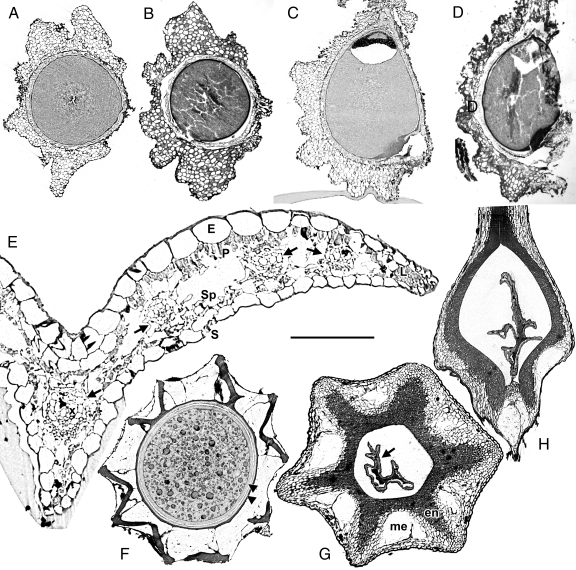Fig. 1.
SRXTM results of modern plant material. (A and C) Saururus chinensis (Saururaceae), digital sections of fruit (A, transverse; C, longitudinal). (B and D) Saururus chinensis (Saururaceae), traditional paraffin-embedded sections (B, transverse; D, longitudinal) of fruits; note torn, detached, and folded parts caused by cutting. (E) Mapania monostachya (Cyperaceae), digital transverse section of leaf showing cellular detail epidermis (E), leaf margin (L) with marginal sclerenchyma, palisade mesophyll (P), stoma (S), spongy mesophyll (Sp), xylem (x), and vascular bundle sheath (arrows). (F) Cyclanthus bipartitus (Cyclanthaceae), digital transverse section of seed with different layers showing as different gray values. Thick dark lines visible in outer layer indicate wall thickenings. Two cuticular envelopes (arrowheads) are distinguishable between outer seed coat and endosperm. (G) Paramapania radians (Cyperaceae), digital transverse section of fruit, showing thin-walled outer mesocarp layer (me), thick-walled inner endocarp layer (en), and collapsed (probably sterile) seed (arrow). (H) Digital longitudinal section of same specimen as in panel G. (Scale bar: A and B, 700 μm; C and D, 465 μm; E, 125 μm; F, 410 μm; G, 255 μm; H, 675 μm.)

